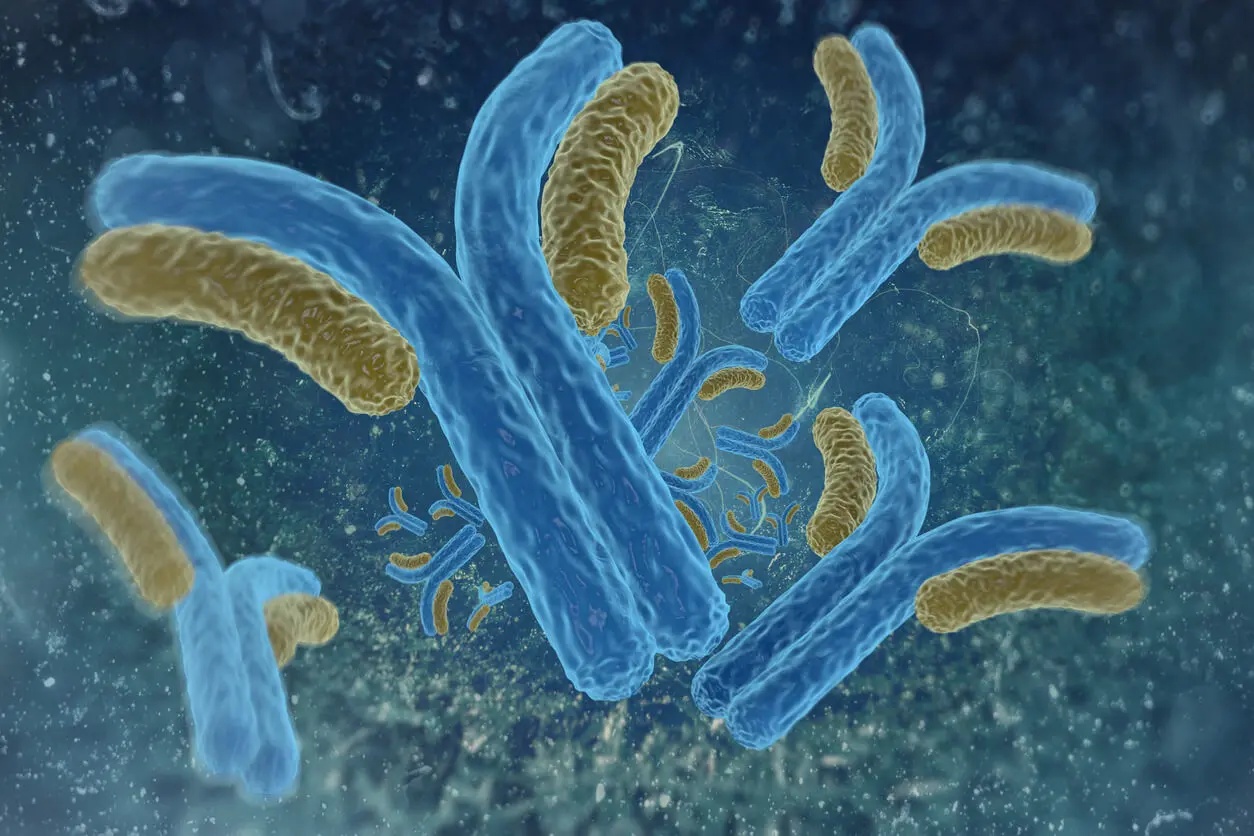Total Protein Test Results and Their Significance


Written and verified by the doctor Mariel Mendoza
The total protein test, also known as serum total protein, is requested by the doctor when the following are suspected:
- Hepatic or renal alterations
- Autoimmune diseases
- Malnutrition
The test may be recommended as part of a routine checkup as well, included in the basic metabolic panel. In addition, it complements diagnosis in cases of unexplained fatigue, edema, or any symptoms suggestive of gastrointestinal problems or bone marrow disturbances.
The total protein test measures the amount of protein in the blood. Most laboratories usually report the total protein value, the fractionated proteins (albumin and globulin), and the ratio of albumin to globulins.
What proteins are being measured?
Proteins are very important structures for the functioning of the body. They’re part of the structure of all cells, organs, and tissues.
They’re found in different forms, such as enzymes, substance carriers, complements, and antibodies (or immunoglobulins). Plasma proteins are synthesized mainly in the liver, whereas immunoglobulins are synthesized by lymphoid cells in the nodules, bone marrow, or spleen.
Two kinds of proteins circulate in plasma: albumin and globulin. Albumin is present in a greater proportion, accounting for approximately 60% of the total protein, and it’s produced in the liver.
It’s responsible for maintaining the colloid osmotic pressure, thus preventing leakage of fluid from the blood vessels into the interstitium. In addition, it’s responsible for transporting hormones, vitamins, minerals such as calcium, among other substances.
Globulins make up the remaining 40% of the total proteins in the blood. They represent a diverse group. Some are produced by the liver and others by the immune system (lymph nodes, spleen and bone marrow). Their functions are aimed at transporting substances and fighting infections.

Read more: What Are Antigens and Antibodies?
How is the total protein test performed?
The total protein test is performed by taking a venous blood sample. Unless other blood tests are required in conjunction, no special preparation is needed beforehand (no fasting is required).
Proteins can also be measured in other biological fluids, such as urine, pleural fluid or cerebrospinal fluid.
Read more: 7 Ways to Reduce Protein in Urine Naturally
The total protein test measures albumin and globulins. If there’s any anomaly in the results, further tests such as serum protein electrophoresis (immunofixation test) and quantitative immunoglobulins may be required.
Serum protein electrophoresis measures the different groups of globulins. These are grouped in the field of study, depending on how they migrate, and are classified as alpha, gamma, and beta.
Interpretation of results
Values vary with age. In those who are 3 or older, the following are considered normal:
- Total protein: 6 to 8 grams per deciliter.
- Albumin: 3.5 to 5.2 grams per deciliter.
- Globulins: 2 to 4 grams per deciliter.
Low total protein values are associated with the following:
- Malnutrition.
- Immunosuppression.
- Hematological disorders: such as leukemia.
- Intestinal malabsorption: as in celiac disease or inflammatory bowel disease.
- Renal disease: in glomerulonephritis and nephrotic syndrome there’s loss of protein in the urine.
- Severe liver disease: when there’s no protein production, as in cirrhosis or liver failure.
- Congestive heart failure: when there’s an increase in plasma volume, which decreases protein concentration by dilution.
High total protein values can be found in the following conditions:
- Dehydration: in this case, there may be an increase in plasma protein concentration due to inadequate intake or vomiting and diarrhea.
- Chronic inflammatory diseases: lupus, rheumatoid arthritis, viral hepatitis.
- Amyloidosis: abnormal accumulation of proteins in different organs and tissues.
- Bone marrow disorders: multiple myeloma.
- Granulomatous diseases.
In addition to the total protein value, the albumin/globulin ratio can be evaluated. A low ratio is associated with increased globulin production (as in multiple myeloma). On the other hand, a high ratio is linked to decreased globulin production, as in leukemia.
It’s important that, in the event of abnormal results, further testing should be requested to determine which specific proteins have abnormal values.

Some things to consider
There are a number of factors in daily life that can affect the results of the total protein test:
- Intense exercise
- Stress
- Pregnancy
- The use of medications: steroids, estrogens and oral contraceptives can decrease protein levels.
Although decreased protein levels may be a sign of severe malnutrition, a high-protein diet won’t raise blood total protein levels.
The sample collection is risk-free and takes no longer than 5 minutes. However, if the technician leaves the tourniquet on too long, it could result in erroneously high albumin levels.
All cited sources were thoroughly reviewed by our team to ensure their quality, reliability, currency, and validity. The bibliography of this article was considered reliable and of academic or scientific accuracy.
- Brandan N, Llanos C, Barrios M, Escalante A, Ruíz D. Proteínas Plasmáticas. Universidad Nacional de Nordeste 2008. Disponible en http://med.unne.edu.ar/sitio/multimedia/imagenes/ckfinder/files/files/Carrera-Medicina/BIOQUIMICA/proteinas.pdf.
- García J, Caicedo M. Proteinograma sérico en personas de 23 – 42 años en la ciudad de Cuenca–Ecuador 2009-2010. Universidad de Cuenca Facultad de Ciencias Médicas. Escuela de tecnología médica. ECUADOR 2010. Disponible en http://dspace.ucuenca.edu.ec/bistream/123456789/3819/1/TECL13.pdf.
- Haldeman C, Foley M, Tuley R. Total Protein and A/G Ratio. University of Rochester Medical Center. Disponible en https://www.urmc.rochester.edu/encyclopedia/content.aspx?contenttypeid=167&contentid=total_protein_ag_ratio.
- Killingsworth L. Plasma proteins in health and disease. Crit Rev Clin Lab Sci. 1979;11.
- Quero A, Ángel I, Castillo F, Rafael, Gallegos R, Gómez J, Francisco J. Estudio de la albúmina sérica y del índice de masa corporal como marcadores nutricionales en pacientes en hemodiálisis. Nutrición Hospitalaria 2015;31(3). Disponible en https://scielo.isciii.es/scielo.php?script=sci_arttext&pid=S0212-16112015000300043.
This text is provided for informational purposes only and does not replace consultation with a professional. If in doubt, consult your specialist.








